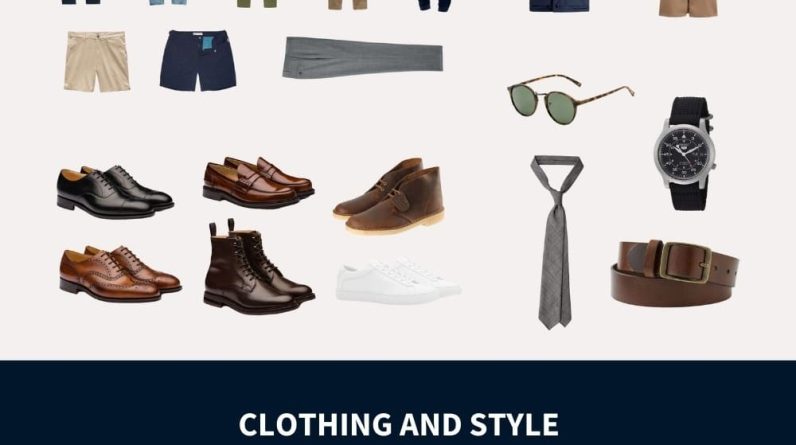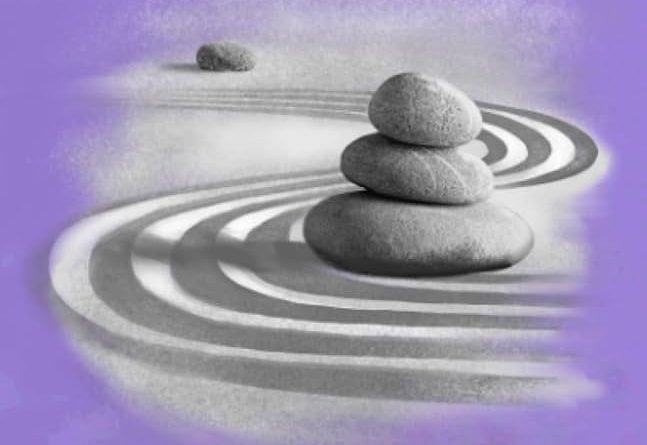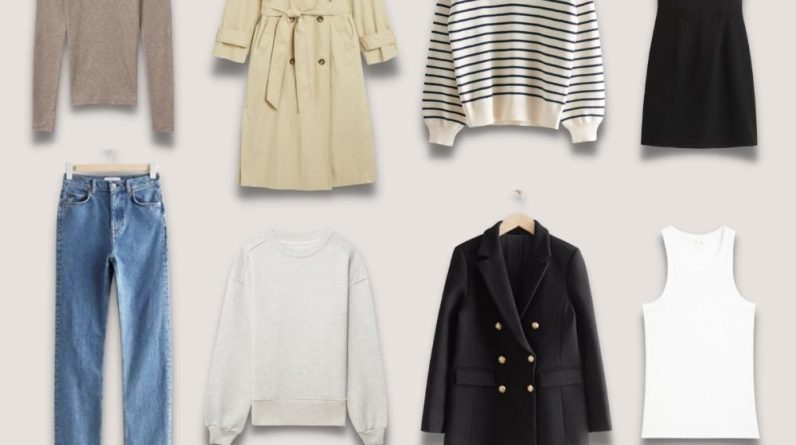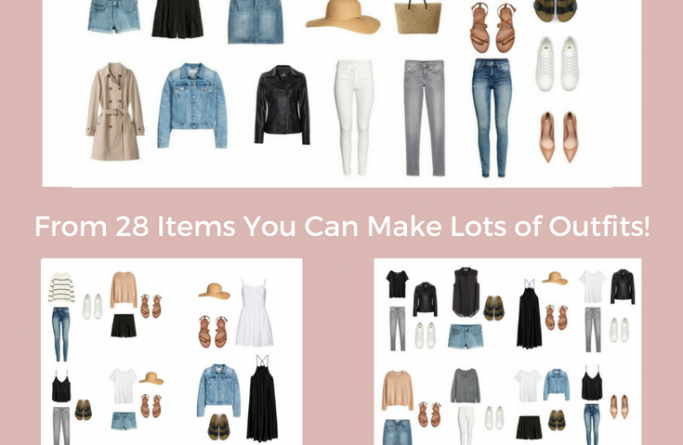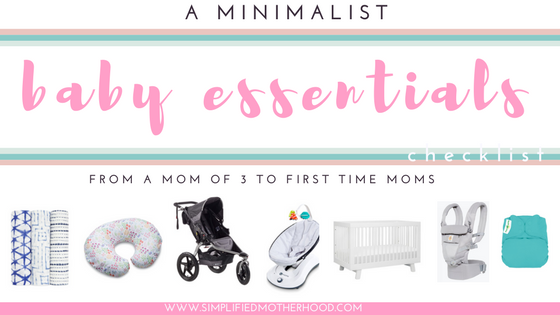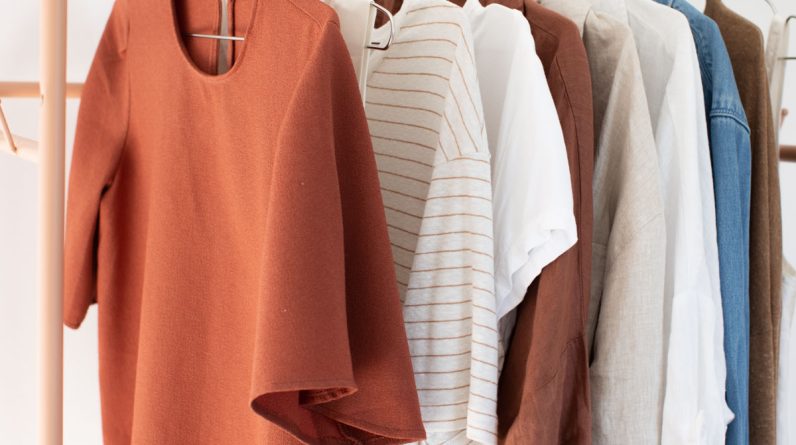
Are you tired of staring at a closet full of clothes, but feeling like you have nothing to wear? Look no further, because “The Ultimate Guide to Building a Minimalist Essentials Wardrobe” is here to simplify your life and revolutionize your style. In this comprehensive guide, you will discover the key principles and practical tips for creating a minimalist essentials wardrobe that embodies simplicity, versatility, and timeless elegance. By decluttering your closet and curating a collection of high-quality, essential pieces, you’ll not only save time and money, but also effortlessly elevate your everyday style. So, get ready to streamline your fashion choices and embrace the beauty of minimalism.
Table of Contents
1. Understanding the Minimalist Essentials Wardrobe
What is a minimalist essentials wardrobe?
A minimalist essentials wardrobe is a curated collection of clothing and accessories that consists of versatile, high-quality pieces that can be easily mixed and matched to create a variety of stylish outfits. The goal of a minimalist wardrobe is to simplify your clothing choices and eliminate clutter, allowing you to focus on the items that truly represent your personal style and meet your needs.
Benefits of having a minimalist essentials wardrobe
Having a minimalist essentials wardrobe offers numerous benefits. Firstly, it saves you time and energy when getting dressed each day since you no longer have to sift through a cluttered closet. With a streamlined wardrobe, you can easily see and access all your options, resulting in quicker and stress-free outfit decisions.
Secondly, a minimalist wardrobe helps in reducing decision fatigue. By limiting your choices to a curated selection of high-quality items, you eliminate the overwhelm of too many options and can focus on what truly matters to you. This can lead to increased productivity and mental clarity throughout the day.
Additionally, having a minimalist wardrobe promotes sustainability. By investing in timeless, durable pieces, you reduce the need for constant buying and contribute to reducing textile waste. It also allows you to prioritize ethical and sustainable fashion choices, supporting brands that align with your values.
How to define your personal style for a minimalist wardrobe
Defining your personal style is an essential step in creating a minimalist wardrobe that reflects your individuality. Start by gathering inspiration from various sources such as fashion magazines, social media platforms, or even from people you admire. Take note of the colors, silhouettes, and overall aesthetic that resonates with you.
Next, assess your current wardrobe to identify common themes and favorite pieces. Consider the types of clothing that make you feel confident and comfortable. Are you drawn to classic and minimalistic looks, or do you prefer bold and eclectic styles? Take note of these preferences as they will guide you in selecting essential pieces for your minimalist wardrobe.
It’s also helpful to create a mood board or Pinterest board that showcases your style preferences. Pin images of outfits, colors, and patterns that inspire you. This visual representation will be a useful reference when shopping for new items or when decluttering your current wardrobe.
2. Decluttering and Assessing Your Current Wardrobe
Why decluttering is important
Decluttering your current wardrobe is a crucial step in creating a minimalist essentials wardrobe. It allows you to eliminate unnecessary items, identify gaps in your collection, and gain a clearer perspective on your personal style. A cluttered wardrobe often results in decision paralysis and makes it difficult to fully appreciate and utilize the pieces you truly love.
By decluttering, you can also reduce waste and make space for new, intentional additions to your wardrobe. It’s an opportunity to let go of items that no longer serve you, whether they are ill-fitting, out of style, or simply don’t align with your personal preferences.
Steps to decluttering your wardrobe
Start by taking everything out of your wardrobe and sorting them into three categories: keep, donate/sell, and discard. As you handle each item, ask yourself if it brings you joy, if it fits well, and if it aligns with your personal style. Be honest with yourself and let go of items that no longer serve a purpose in your wardrobe.
Once you have sorted your items, organize the “keep” pile back into your wardrobe, considering an efficient and visually appealing arrangement. You may choose to organize by color, type, or season, depending on your personal preference.
Assessing items for their versatility and quality
When reassessing the items in your wardrobe, consider their versatility and quality. Look for pieces that can be easily mixed and matched with others to create different outfits. Classic silhouettes and neutral colors are often the most versatile, as they can be dressed up or down and paired with various accessories.
In terms of quality, prioritize items that are well-made and durable. Check for signs of wear and tear, and consider whether the item is likely to last you a long time. Investing in quality pieces not only saves you money in the long run but also aligns with the sustainable aspect of minimalist wardrobes.

This image is property of modernminimalism.com.
3. Identifying Essential Pieces for Your Wardrobe
Building a foundation of timeless basics
When creating a minimalist essentials wardrobe, it’s important to focus on building a foundation of timeless basics. These are classic, versatile pieces that will never go out of style and can form the backbone of countless outfits. Examples of timeless basics include white t-shirts, black trousers, a tailored blazer, and a little black dress.
By investing in these staple pieces, you can create a strong wardrobe foundation that can be supplemented with trendier items if desired. The key is to prioritize quality and fit when selecting these basics to ensure they stand the test of time.
Choosing versatile items that can be mixed and matched
Versatility is a key characteristic of a minimalist essentials wardrobe. Select items that can be easily mixed and matched to create a variety of outfits. Look for pieces that can be dressed up or down, and can transition seamlessly from day to night or from casual to formal occasions.
For example, a pair of well-fitting jeans can be paired with a t-shirt and sneakers for a casual look, or dressed up with a blouse and heels for a more polished ensemble. Versatile items allow you to maximize the versatility of your wardrobe and get the most out of each item.
Considering your lifestyle and needs
When identifying essential pieces for your wardrobe, it’s important to consider your lifestyle and specific needs. Take into account the activities you typically engage in, such as work, social events, or hobbies, and choose items that suit those occasions.
For example, if you work in a corporate setting, you may need a few tailored blouses and pantsuits. If you enjoy outdoor activities, investing in functional and durable activewear may be a priority. By tailoring your wardrobe to your lifestyle, you ensure that you have the right pieces for every occasion.
4. Creating a Capsule Wardrobe
What is a capsule wardrobe?
A capsule wardrobe is a smaller, more curated version of a minimalist essentials wardrobe. It is a collection of a limited number of carefully chosen clothing items that can be mixed and matched to create a range of outfits. A typical capsule wardrobe consists of around 30-40 items, including tops, bottoms, dresses, and outerwear.
The concept of a capsule wardrobe was popularized by designer Susie Faux in the 1970s and has gained widespread recognition as a practical and effective approach to minimizing one’s wardrobe and maximizing outfit options.
Benefits of a capsule wardrobe
A capsule wardrobe offers several benefits. Firstly, it promotes intentional and mindful shopping. With a limited number of items, you are forced to carefully consider each purchase, ensuring that it truly aligns with your personal style and meets your needs. This helps prevent impulse buys and reduces the chances of ending up with items that rarely get worn.
Secondly, a capsule wardrobe streamlines your daily routine. By reducing decision fatigue, you can focus your time and energy on more important tasks. Knowing that all the items in your wardrobe can be effortlessly mixed and matched, you can quickly put together stylish and coordinated outfits without wasting time.
Lastly, a capsule wardrobe encourages creativity. With fewer items to work with, you are encouraged to experiment with different combinations and styling techniques, resulting in unique and personalized outfits. It allows you to fully explore the potential of each piece and discover new ways to express your personal style.
How to create a capsule wardrobe
To create a capsule wardrobe, start by assessing your current wardrobe and following the decluttering steps mentioned earlier. Once you have determined which items make the cut, choose a color palette that works well together and reflects your personal style.
Next, select a range of tops, bottoms, dresses, and outerwear that can be mixed and matched to create a variety of outfits. Aim for a balance between statement pieces and versatile basics. Consider your lifestyle and specific needs to ensure that you have the necessary items for different occasions.
It’s important to be flexible with your capsule wardrobe and adapt it to changing seasons and personal preferences. Rotate items in and out as needed, and reassess your collection every few months to ensure it continues to align with your style and needs.
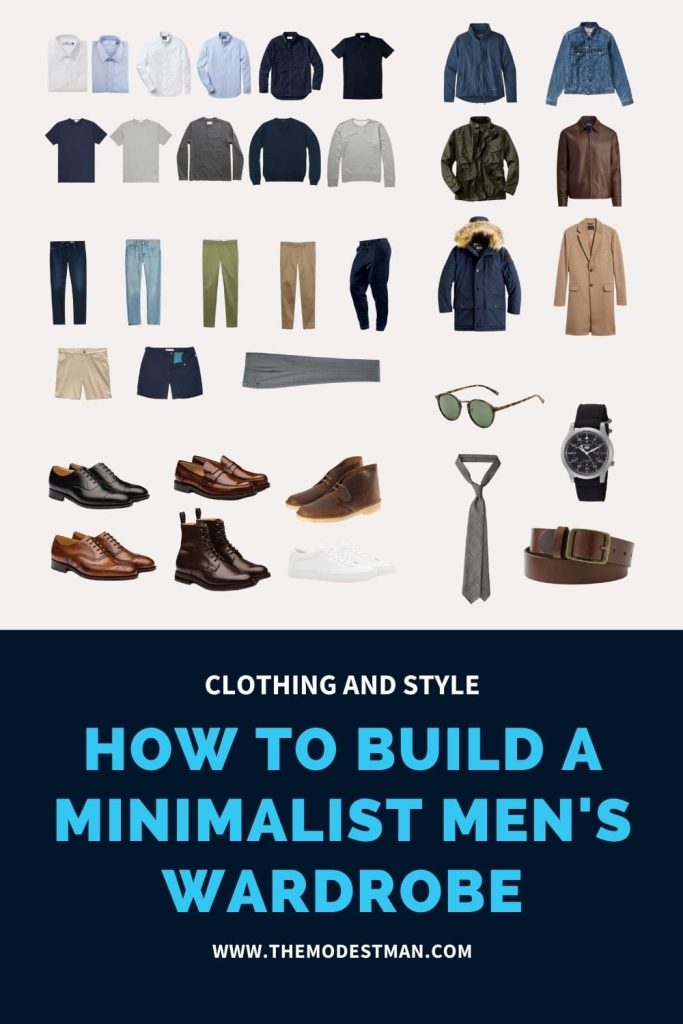
This image is property of www.themodestman.com.
5. Choosing a Neutral Color Palette
The importance of a neutral color palette
A neutral color palette is a key element of a minimalist essentials wardrobe. Neutral colors such as black, white, gray, beige, and navy act as a foundation for your outfit and create a cohesive and timeless look. They can easily be combined with bolder colors or patterns, and are less likely to clash with each other.
In addition, a neutral color palette allows for easy accessorizing. Neutral pieces can be paired with various accessories, such as statement jewelry or colorful scarves, to add visual interest and individuality to an outfit.
Selecting colors that work well together
When choosing a neutral color palette for your wardrobe, opt for shades that complement each other and can be mixed and matched effortlessly. For example, black and white are classic pairings that create a sleek and modern look, while gray and navy create a more understated and sophisticated aesthetic.
Consider your skin tone and personal preferences when selecting specific shades within your chosen neutral color palette. Some individuals may prefer warmer neutrals like beige and camel, while others may gravitate towards cooler neutrals like charcoal and slate gray. Experiment with different combinations to find the ones that resonate with your personal style.
Adding pops of color and pattern strategically
While a neutral color palette forms the foundation of a minimalist wardrobe, it’s important to incorporate pops of color and pattern strategically to add interest and personality to your outfits.
Choose one or two accent colors that work well with your neutral palette, and use them sparingly in accessories or statement pieces. For example, a vibrant red scarf or a floral patterned blouse can add a playful touch to an otherwise neutral outfit. These pops of color and pattern serve as focal points and create visual interest without overwhelming the simplicity of a minimalist aesthetic.
6. Understanding Quality and Sustainable Fashion
Why quality matters in a minimalist wardrobe
Quality is a crucial aspect of a minimalist wardrobe. Investing in high-quality clothing and accessories ensures that they will last longer, reducing the need for frequent replacements and ultimately saving you money in the long run. Quality garments are often made with durable materials and are constructed with attention to detail, resulting in a better fit and overall aesthetic.
Furthermore, prioritizing quality over quantity aligns with the principles of sustainability. Fast fashion, characterized by low-quality, disposable clothing, contributes to environmental degradation and unethical labor practices. By consciously choosing quality items, you support brands that prioritize craftsmanship, fair wages, and sustainable production processes.
Identifying high-quality and durable materials
When evaluating the quality of a garment, pay attention to the materials it is made from. Natural materials such as cotton, linen, silk, and wool are generally considered more durable and breathable compared to synthetic fabrics. They tend to age well and often develop a desirable patina over time.
Inspect the construction details of the garment, such as stitching, seams, and buttons. Well-made items tend to have sturdy stitching, reinforced seams, and high-quality buttons that are securely attached. These small details indicate the level of craftsmanship and attention to durability.
In addition to the materials and construction, consider the reputation and ethics of the brand. Research their sourcing and manufacturing practices to ensure that they align with your values. Look for brands that prioritize sustainability, fair trade, and transparency in their supply chain.
Exploring sustainable fashion options
Sustainable fashion seeks to minimize the negative impacts of the fashion industry on the environment and society. There are several ways to incorporate sustainable practices into your minimalist wardrobe.
One option is to support brands that prioritize sustainable materials and production processes. Look for certifications such as Organic Cotton, Global Organic Textile Standard, or Fair Trade to ensure that the brands you choose meet certain environmental and social standards.
Another sustainable option is to shop secondhand or vintage. Thrift shopping not only reduces textile waste but also allows you to discover unique and one-of-a-kind pieces. Explore local thrift stores, online marketplaces, or clothing rental services to find pre-loved items that align with your style.
Lastly, consider practicing mindful consumption. Focus on buying fewer, higher-quality items and resist the urge to participate in fast fashion trends. Embrace minimalism by appreciating what you already have and making thoughtful purchasing decisions that promote longevity and sustainability.

This image is property of modernminimalism.com.
7. Essential Clothing Items for a Minimalist Wardrobe
Tops: versatile shirts, blouses, and sweaters
In a minimalist wardrobe, tops should be versatile and timeless. Aim for a mixture of basic t-shirts, crisp button-down shirts, elegant blouses, and comfortable sweaters. Neutral colors like white, black, and gray are always a safe choice, as they can easily be incorporated into various outfits.
Tops should be chosen based on your personal style and lifestyle needs. If you work in a professional environment, investing in tailored blouses and shirts is essential. For a casual look, opt for well-fitting t-shirts or lightweight sweaters.
Bottoms: classic pants, skirts, and jeans
When it comes to bottoms, classic and versatile options are key. Invest in a pair of well-fitting black pants or trousers, as they can be dressed up for formal occasions or paired with a casual top for a more relaxed look. A classic pencil skirt in a neutral color is also a versatile piece that can be worn to the office or dressed down for a weekend outing.
Jeans are a staple in most wardrobes and are available in a variety of styles and cuts. Choose a pair that flatters your body shape and can be easily paired with different tops and shoes. Consider opting for a dark wash as it can be more versatile and timeless than trendy or distressed styles.
Dresses: timeless and adaptable styles
Dresses are a convenient and versatile option for minimalist wardrobes. Opt for timeless styles that can be dressed up or down depending on the occasion. A little black dress is a classic choice that can be accessorized in countless ways to achieve different looks.
Consider investing in a few dress styles that suit your personal preferences and lifestyle. A wrap dress, for example, is a universally flattering silhouette that can be worn for both casual and formal events. A shirt dress is another versatile option that can be worn with sandals for a relaxed look or paired with heels for a more polished outfit.
Outerwear: functional and stylish jackets and coats
Outerwear in a minimalist wardrobe should be both functional and stylish. Invest in a few pieces that can withstand different weather conditions and complement various outfits. A well-tailored blazer is a wardrobe essential that can elevate any look, whether it’s for work or a formal event.
A versatile coat is another must-have. Choose a style that suits your climate, such as a classic trench coat or a tailored wool coat. These pieces are not only timeless but also offer practicality and protection from the elements.
Footwear: comfortable and versatile shoes
When it comes to footwear, prioritize comfort and versatility. Invest in a few pairs of high-quality shoes that can be worn for different occasions. A classic pair of black or nude pumps is a wardrobe staple that can be paired with dresses, skirts, or pants. Opt for a heel height that you find comfortable, as you want to be able to wear them for extended periods.
For everyday wear, consider investing in a pair of quality leather flats or loafers. These can be dressed up or down and are suitable for various activities. Additionally, having a pair of comfortable and durable athletic shoes is important for any active or athletic pursuits you engage in.
Accessories: minimalistic jewelry and functional pieces
Accessories play a vital role in completing an outfit in a minimalist wardrobe. Choose minimalistic jewelry, such as a pair of stud earrings or a simple pendant necklace, to add a touch of elegance without overwhelming the simplicity of your outfit.
Functional accessories like a classic black leather belt or a versatile handbag can also elevate your look while serving a practical purpose. Look for pieces that are timeless and well-made, as these are likely to stand the test of time and be adaptable to different styles.
Intimates and loungewear: comfortable and durable essentials
While they may not be the most visible parts of your wardrobe, undergarments and loungewear are still essential in a minimalist wardrobe. Prioritize comfort and durability when selecting these items, as they are worn close to your skin and should offer long-lasting comfort.
Invest in well-fitting bras and underwear made of high-quality materials. Opt for neutral colors and seamless designs that can be discreetly worn under different clothing. For loungewear, choose comfortable and versatile pieces, such as soft cotton t-shirts and relaxed-fit pants, that can be worn for both lounging at home and running errands.
8. Essential Accessories for a Minimalist Wardrobe
Bags: versatile and functional designs
When it comes to bags in a minimalist wardrobe, versatility and functionality are key. Opt for a few well-made bags that can serve different purposes and complement various outfits. A classic tote bag is a versatile option that can carry your daily essentials and work well for both casual and professional settings.
For more formal occasions, invest in a sleek and structured handbag that can be carried as a shoulder bag or a clutch. Choose a neutral color like black or tan, as it will easily coordinate with different outfits.
Belts: classic and adjustable styles
Belts are not just functional accessories; they can also add a stylish touch to your outfits. Invest in classic and adjustable styles that can be worn with different bottoms. A black leather belt is a versatile choice that can be paired with jeans, pants, or dresses, while a braided or woven belt can add a bohemian touch.
Choose belts in neutral colors and in a width that flatters your body shape. Avoid overly trendy styles that may go out of fashion quickly, and opt for timeless designs that will stand the test of time.
Scarves: elegant and adaptable accessories
Scarves are a versatile accessory that can add elegance and depth to a minimalist outfit. Invest in a few high-quality scarves in different materials and sizes to suit various seasons and styles. A lightweight silk scarf is perfect for adding a touch of sophistication to a simple blouse or dress.
For colder seasons, opt for cozy cashmere or wool scarves that can provide warmth and texture. Look for scarves in neutral colors or in patterns that complement your wardrobe’s color palette. Experiment with different ways of tying and draping the scarf to create unique and personalized looks.
Hats: stylish and practical headwear
Hats are both stylish and practical accessories that can elevate your look while protecting you from the sun. Invest in a versatile hat that suits your personal style and can be worn for different occasions. A classic fedora or a wide-brimmed straw hat are popular options that can be dressed up or down, depending on the outfit.
Consider the material, fit, and color of the hat when making your selection. Look for hats in neutral colors like beige or black, as they are more likely to coordinate with a range of outfits. Remember to consider your face shape and choose a hat style that flatters your features.
Sunglasses: timeless and protective eyewear
Sunglasses are an essential accessory for any wardrobe, minimalist or not. They not only protect your eyes from the sun’s rays but also add a touch of coolness to your outfit. When choosing sunglasses, opt for timeless and flattering frames that suit your face shape and personal style.
Classic styles like aviators, cat-eye, or wayfarers are versatile choices that can withstand changing trends. Consider investing in a pair with good UV protection to ensure the safety of your eyes. Neutral or tortoiseshell frames are versatile options that can be worn with various outfits.
Watches: minimalist and durable timepieces
A watch is not only a practical accessory but also a stylish statement piece. In a minimalist wardrobe, it’s important to choose a watch that is both timeless in design and built to last. Opt for a minimalist watch with a clean and simple dial, preferably in a neutral color like silver, gold, or black.
Consider the materials used, such as stainless steel or genuine leather straps, to ensure durability and longevity. A high-quality watch is an investment piece that can be worn for years to come and can effortlessly elevate any outfit.
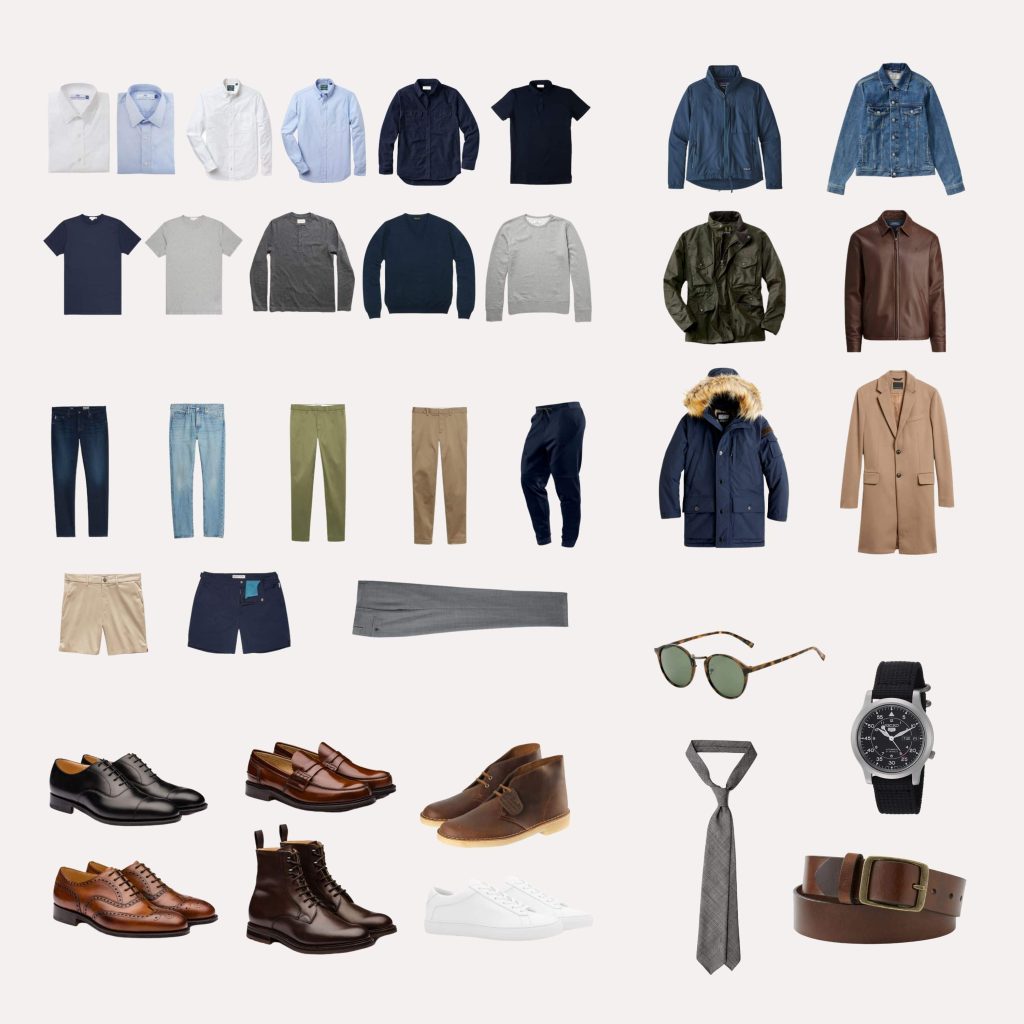
This image is property of www.themodestman.com.
9. Building a Minimalist Wardrobe on a Budget
Tips for shopping smart and avoiding impulse buys
Building a minimalist wardrobe on a budget requires careful and intentional shopping. Here are some tips to help you shop smart and avoid impulse buys:
-
Make a list: Before heading out to shop, make a list of the specific items you need or want to add to your wardrobe. This will serve as a guide and prevent you from being swayed by unnecessary purchases.
-
Set a budget: Determine a budget for your shopping trip and stick to it. By setting a financial limit, you can prioritize quality and essential items over impulsive purchases.
-
Practice delayed gratification: When you spot something you like, give yourself time to consider the purchase. Delaying the decision allows you to assess whether the item truly aligns with your personal style and needs.
-
Only buy what you love: Avoid settling for items that are just okay. Aim to only buy items that you truly love and can see yourself wearing frequently. This ensures that you get the most value out of your purchases and reduces the chances of regret.
Finding affordable options without compromising quality
Building a minimalist wardrobe on a budget does not mean sacrificing quality. Here are some strategies for finding affordable options without compromising on quality:
-
Shop sales and discounts: Keep an eye out for sales and discounts from your favorite brands. Sign up for newsletters or follow them on social media to be notified of special promotions.
-
Explore affordable brands: Research and discover affordable brands that align with your style and quality standards. Many ethical and sustainable fashion brands offer competitive prices without compromising on craftsmanship.
-
Consider secondhand options: Thrift shopping and buying secondhand clothing are excellent ways to find quality pieces at a fraction of the original price. Explore local thrift stores, consignment shops, or online platforms for pre-loved items in excellent condition.
-
Assess cost per wear: When evaluating the price of an item, consider its potential longevity and versatility. Divide the cost by the expected number of times you will wear it to determine the cost per wear. This helps put the price into perspective and assess whether it is a worthwhile investment.
Thrift shopping and secondhand clothing
Thrifting and purchasing secondhand clothing offer several benefits, including affordability, uniqueness, and sustainability. Here are some tips for successful thrift shopping:
-
Explore various thrift stores: Visit different thrift stores in your area to discover a wide range of styles and options. Different stores may specialize in different types of clothing or have unique finds.
-
Check the quality: Inspect items carefully for any signs of wear or damage. Avoid items that are heavily stained, torn, or in poor condition. Focus on pieces that are likely to have a longer lifespan and can be easily incorporated into your wardrobe.
-
Try everything on: Sizes can vary between brands and different eras, so it’s important to try on items before purchasing. Ensure a proper fit and consider any alterations that may be needed.
-
Keep an open mind: Thrift shopping requires a bit of patience and creativity. Embrace the unexpected and be open to trying out new styles or experimenting with different colors and patterns.
10. Maintaining and Updating Your Minimalist Wardrobe
Organizing and caring for your clothes
Maintaining a minimalist wardrobe involves regular organization and care. Here are some tips to keep your wardrobe in order:
-
Declutter regularly: Set aside time every few months to reassess your wardrobe and declutter any items that no longer align with your style or needs. This helps prevent unnecessary accumulation of clothing and maintains a streamlined wardrobe.
-
Invest in proper storage: Use high-quality hangers, storage boxes, and dividers to keep your clothing organized and protected. Store off-season items in a separate space to maximize your closet space and maintain visual clarity.
-
Follow garment care instructions: Check the care labels on your clothing and follow the recommended cleaning and maintenance instructions. Proper care ensures that your garments last longer and retain their quality.
-
Rotate and alternate: To prevent excessive wear and tear on your clothes, rotate and alternate the items you wear frequently. This helps distribute the use and extends the lifespan of each piece.
Seasonal evaluations and adjustments
As the seasons change, it’s important to evaluate and adjust your wardrobe accordingly. Here are some steps to take during seasonal transitions:
-
Evaluate your current wardrobe: Assess which items are suitable for the upcoming season and which ones you may need to put away or store. Consider factors such as temperature, fabric weight, and color.
-
Rotate seasonal items: Store off-season clothes in a designated space or vacuum-sealed bags to free up space in your immediate wardrobe. Keep only the items that are appropriate for the current season easily accessible.
-
Assess gaps and needs: Determine if there are any gaps in your wardrobe for the upcoming season. This may include purchasing additional layering pieces, outerwear, or accessories that suit the weather conditions.
-
Experiment and adapt: Embrace the opportunity to experiment with different outfit combinations and styling techniques during each season. Maximize the versatility of your wardrobe by layering and mixing items to suit changing weather and personal preferences.
How to introduce new pieces while maintaining a minimalist approach
When introducing new pieces to your minimalist wardrobe, it’s important to maintain a thoughtful and intentional approach. Here’s how to do it:
-
Assess your needs: Before making a purchase, assess whether the item fills a gap in your wardrobe or brings you joy. Consider its versatility and compatibility with your existing wardrobe.
-
Follow the “one in, one out” rule: When adding a new item, consider removing a similar item from your wardrobe to maintain a balanced and streamlined collection. This prevents unnecessary accumulation and helps you prioritize quality over quantity.
-
Focus on quality and longevity: Invest in high-quality pieces that are likely to last and align with your personal style. Avoid trendy items that may quickly go out of fashion and opt for timeless designs that withstand the test of time.
-
Embrace swaps and rentals: Rather than purchasing new items, consider participating in clothing swaps with friends or renting special occasion outfits. This allows you to enjoy new pieces without the commitment of ownership or contributing to waste.
By following these guidelines, you can continue to evolve and refine your minimalist wardrobe while staying true to its core principles.
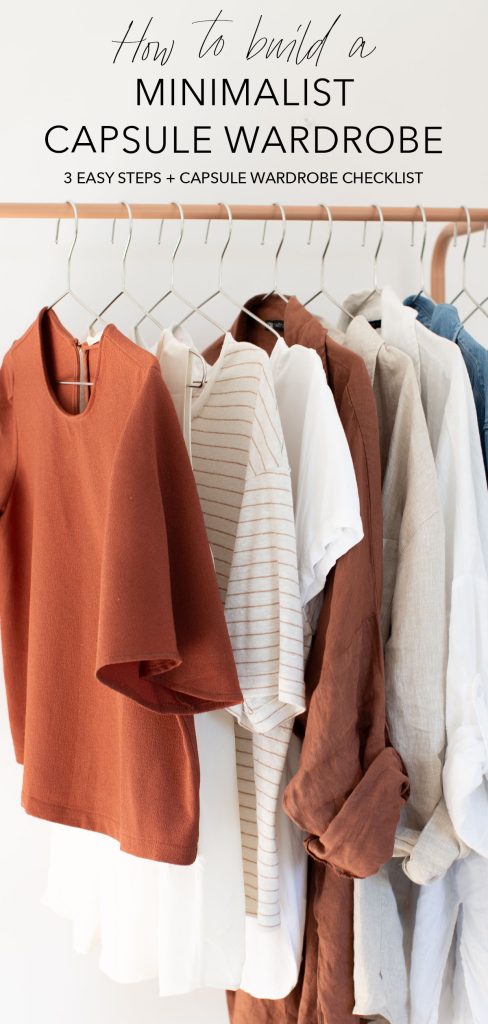
This image is property of modernminimalism.com.


